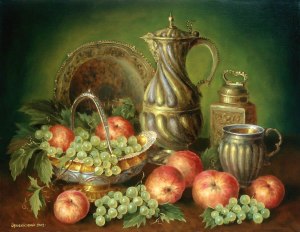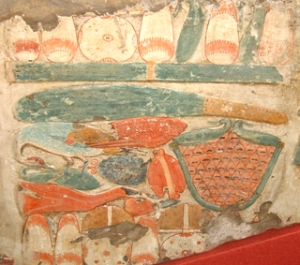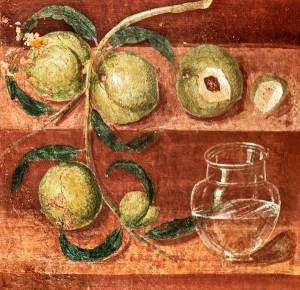Welcome to Rembrandt part 2! If you want to read part 1 it’s here.
So, as I said at the end of my other post I’m interested to learn a bit more about Rembrandt’s self-portraits. After this, there is one picture I’m specifically interested in: The girl in a Picture Frame
Lets do this in order.
Self Portraits
Rembrandt created over 90 self-portraits in his life in differing forms – in fully realised paintings, etchings and drawings. Many artists create self portraits but very few, if any, have come anywhere near this number. Apparently, why Rembrandt created such a large number of portraits of himself remains a mystery. In fact, it’s one of the greatest mysteries of art history!
There are a couple of theories flying around about why he did this.
Until recently the most popular theories approached this question from a psychological point of view. It’s possible that these self portraits acted as self studies, a way of seeing himself both externally and internally. By studying his own figure he was able to look inside of himself and increase the knowledge of his own being. This train of thought is most notably applied to Rembrandt’s late portraits in which this internal dialogue is more noticeable. According to Jacob Rosenberg (Rembrandt expert) his later portraits show a shift from ‘outward description’ to a more self-analytical way of working.
The fact that he drew himself with a number of different expressions and emotions adds to this theory and suggests that by exploring himself and his own psyche, he was able to understand more about man in general.
A newer theory is a bit different to this, and focuses a bit more on his earlier portraits. Many of the portraits are studies of particular expressions and can act as a sort of catalogue of expressions which can then later be used in history painting or something. The reason Rembrandt used himself for these pictures though is unknown. It’s possible it could be that by using himself he didn’t need to pay anyone else or arrange modelling times. It could also be because these studies were very popular with the public of all classes. Meaning that by using himself he would ingrain his image on people’s mind, establishing himself as a celebrity.
I’m not going to go too much more into this. I think though, it’s fair to say that the portraits act as a sort of visual diary of Rembrandt’s life. Some of the pictures that include himself also show his wife Saskia or Titus his son. Some of them, like the one below feature them playing roles in scenes (this might lend some gravity to the celebrity theory). Perhaps because I know the sad story of Rembrandt and his family I find these quite touching.
So, I made a mistake in my last post, by saying I was particularly interested in the painting Girl in the Window. The painting I actually meant was Girl in a Picture Frame. The Girl in the Window is however fascinating in all her creepy, childlike, seductive glory so lets talk about her a bit anyway.
What I really like about this picture is how mysterious it is. There is a lot of contradiction here that makes it difficult to guess who she was or what she had to do with Old Van Rijn. For example, she looks young, with childlike features and innocence, and yet there is a knowing seductivity in her eyes and the way her hands subtly draw attention to her cleavage. Another thing, is that she leans leisurely over the window in, frankly, a unladylike manner. I have read a few bits that describe her as a servant. Maybe this is true and goes towards her less-than-noble pose, however there’s jewellery in her hand, which she plays with coyly. Maybe it belonged to her mother? Maybe it’s a gift from her lover? The master of the house perhaps? My favourite contradiction though can be a bit more abstract. She seems to glow, giving off a sort of angelic light, but yet everything around her is dark. The passage behind her completely black even. I suppose this could be purely matter of fact – The light source comes from the bottom left of the picture and the unlit house behind her is dark…Or it could be more metaphorical, calling into question matters of angelic beauty in a world of ugliness. Or the liveliness of youth compared to the frailty of age (Rembrandt was almost 40 when he painted this). It be about anything – life and death – light and dark – Jedi vs Sith.
Now I’m just throwing ideas around. But, then this is what I love about art, it’s the possibility the spectator has to imagine and create him/herself the context of a work. Sometimes it’s fun to disregard everything you know about an artist and their political/social context and just let your mind run free. This is most defiantly the approach I’ll be taking with Sketch anyway!
The Girl in a Picture Frame AKA The Jewish Bride
This is without a doubt my favourite Rembrandt work. The reason I like it, similar to The Girl at the Window is down to the mystery of it, and the multitude of interpretations we can throw at it.
The girl is very sweet, with dark, welcoming eyes and a friendly face. She’s adorned with a fantastic hat and a wonderful and very noble red dress (Call out! – Does anyone know if there’s anything particular about her clothing? Is the dress some sort of traditional wear? Please let me know if you know + be the first to comment on Sketches, Scratches and Scattered Thoughts!) The background is left purposely vague – Are those clouds behind her? How high up is she? And then we notice her hands. Huh? What the…Yes, just like in The Ring, she is reaching out of the picture, resting her hands over the frame as if simply to show that she can. So now the questions begin: Is she in fact some dark embodiment of our fear that will kill us 7 days after we look at it? Or, is she the female equivalent of Neo, discontent with her humble existence inside this Matrix?
I read one theory which said this picture was just a way for Rembrandt to show off his skills in 3 dimensional illusion – but I think that’s a massive load of codswallop. I like to think it’s a piece about art taking on a life of its own, reaching beyond the picture frame into the mind. It might also, along with the numerous self-portraits have something to do with Rembrandt putting his own life into his work, giving his life for them, like Jesus with a paintbrush.
Whatever it is, this picture demonstrates a rather po-mo approach to the work. The fact that we are looking into a frame and the girl looks straight back out at us. But more than this, what we’re looking at, is a frame within a frame (I highly doubt that the frame in the picture being the same design as the actual frame is coincidence – it was a choice I’m sure), so actually this picture is sort of 2 levels deep. Like the bit in Inception when Joseph Gordon-Levitt is fighting on the walls and roof.
Well, it’s obvious at this point that I’ve been watching far too many American films and it’s all getting a bit silly. Either way, these pictures are fascinating and open to infinite interpretations, the way all good art ought to be. Do any of you have any ideas about these pictures? Perhaps some more flights of fancy or something a little more educated? Do let me know.
You might also notice me gently (or perhaps aggressively) prompting commenters. I’d like to discuss ideas with people, and actually in a while I’ll actually be posting some open questions about children’s literature which I’d love to discuss with people. So please do comment.
Right, The GB Men’s Handball is on in a few hours so I think I’ll go and prepare myself for it.
Jack.













